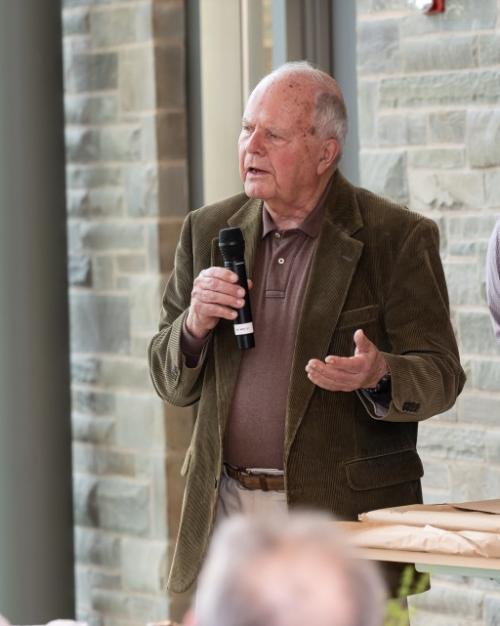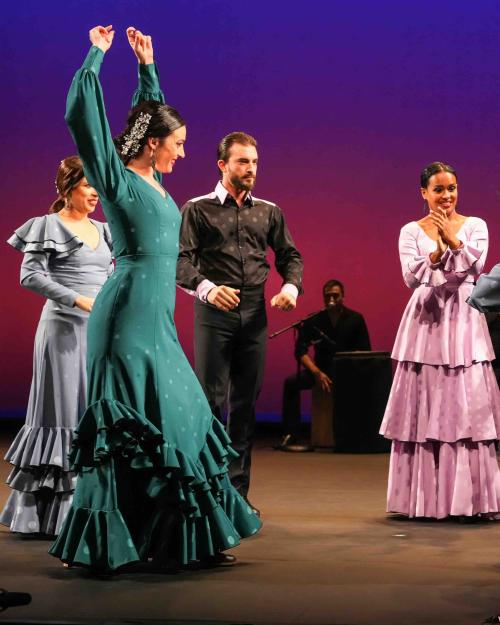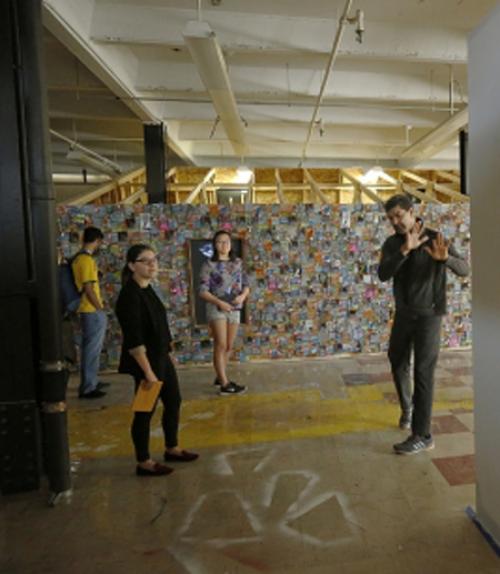Race. Class. Determination. The tension and conflict within social systems.
A point of contact between them is empathy. This is the context of “Side by Side,” a sculptural installation by multimedia artist and educator Pepón Osorio, on display until May 26 in Rand Hall.
Osorio is the artist-in-residence for the Cornell Council for the Arts (CCA) 2016 Biennial, “Abject/Object Empathies.” His work often raises the visibility of the toll of systemic inequity and social alienation on individual and community life.
Unveiled in April, the site-specific installation tells the story of a local family of 10 – a matriarch raising nine grandchildren and great-grandchildren without help from their parents – and their personal experiences of the domestic and social systems surrounding them. Constructed in a corner of Rand Hall, its centerpiece is a house – flipped, wedged between floor and ceiling and tilted on its peaked roof – with LCD panels for windows and exterior walls blanketed with lottery tickets. In each of the nine windows, video displays the matriarch with one of her grandchildren or great-grandchildren standing half-submerged in water. Additional video is projected upside-down on two nearby walls.
Osorio often involves the community in his projects and was a natural fit for the biennial theme, CCA Director Stephanie Owens said. “He is a kind of embedded listener who expresses the story of people through visual work, through media, and sees how social systems maintain the status quo.”
Neither Owens nor Osorio knew what the work would be until he had gotten to know some of the people who live and work in the community. Before submitting a specific proposal, Osorio made frequent trips from Philadelphia to Ithaca, a yearlong process of immersion in the university and local neighborhoods, including meeting with community members at the Greater Ithaca Activities Center.
Further inspiration for “Side by Side” came when Osorio saw the rawness of Rand Hall’s second floor.
Community participation is integral to Osorio’s work, and this installation was largely constructed by local students of the Hammerstone School: Carpentry for Women and graduate students in the course Decolonial Poetics and Aesthetics, taught by Ella Maria Diaz, assistant professor of Latina/o studies and English. Diaz’s students completed a unit on Osorio’s art in conjunction with his residency, as part of their study of decoloniality and producers of visual, performance and installation art in the U.S. and Latin America.
During construction of the work, Diaz made a site visit to the installation with her students and advisees. Also present were Osorio and Owens, assistant professor of the history of art and visual studies Ananda Cohen-Aponte and several of her students, and others from the Cornell and downtown Ithaca communities.
Diaz wanted her students to experience the installation from participation in its building to mid-completion. The time spent with the artist was also an opportunity to intervene in a process that often doesn’t account for the history of artists of color who, according to Diaz, have always built community in traditional and nontraditional spaces for art.
“Artists like Osorio did so and continue to do so because their work and communities are excluded from institutions such as the museum and university,” Diaz said. “This is why Osorio’s installation is so significant.”
The installation also served as the focus for community interaction through a series of three encuentros, conversations between students, faculty, community members and local leaders on the topics of intergenerational communication, the role of women in the community and migration. Participants used the opportunity to share personal experiences and testimonies surrounding the themes of Osorio’s work.
“In the context of the biennial’s theme of empathy, making art can mediate between cultural differences and notions in a way that is intentional,” Owens said. “‘Side by Side’ is an expression of how social systems are influenced by where we live and how we live.”
This story also appeared in the Cornell Chronicle.




